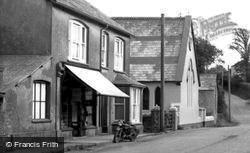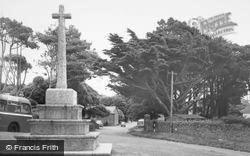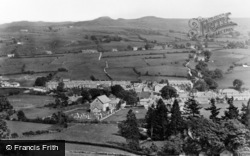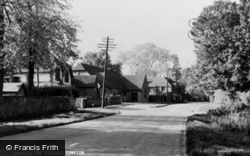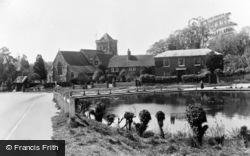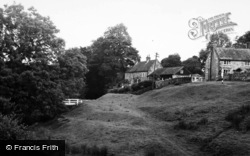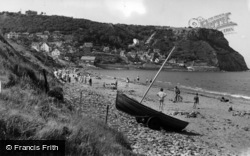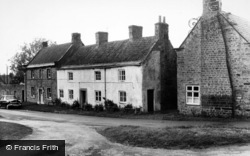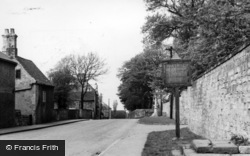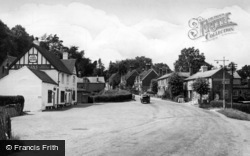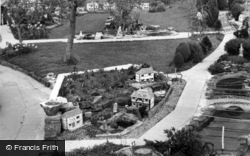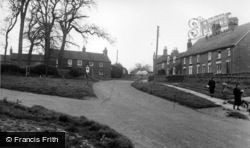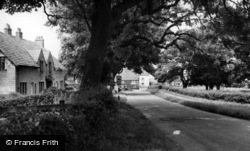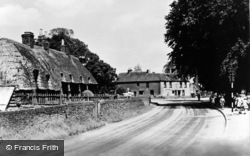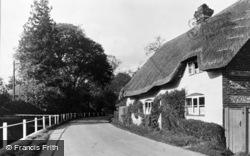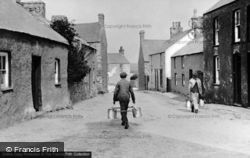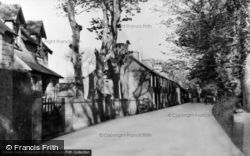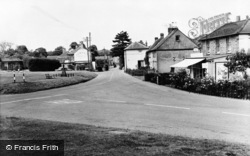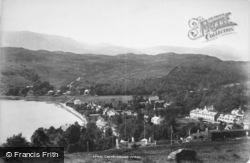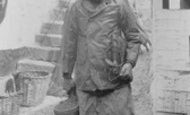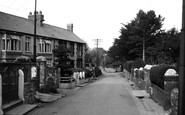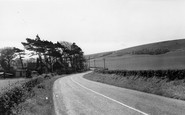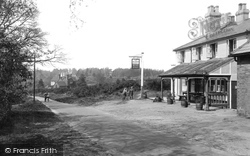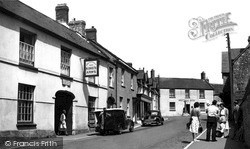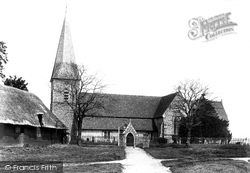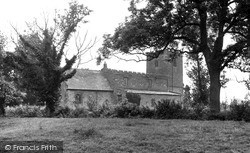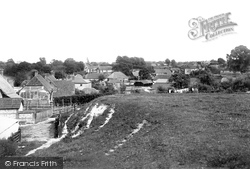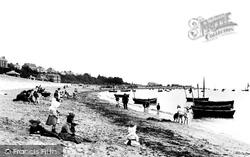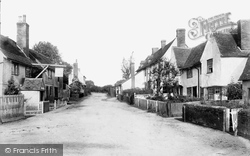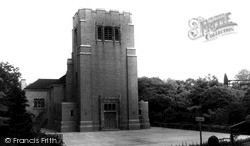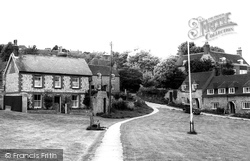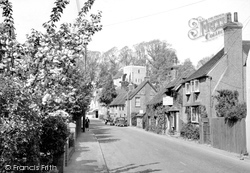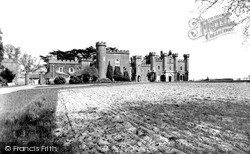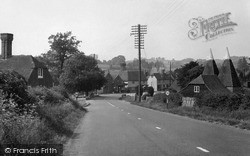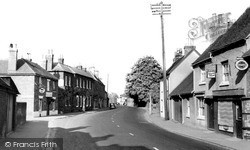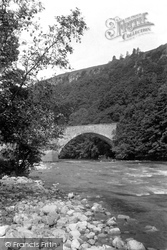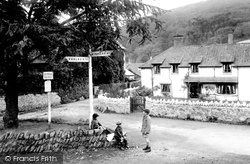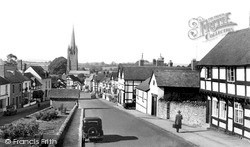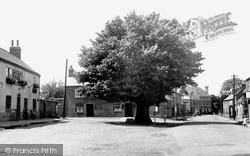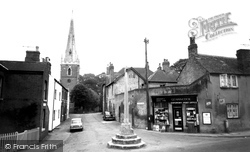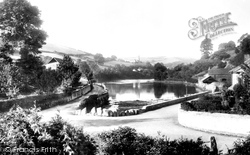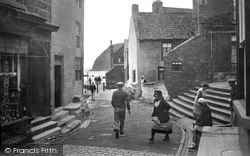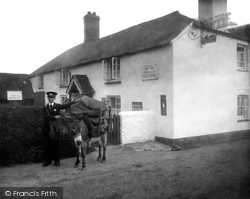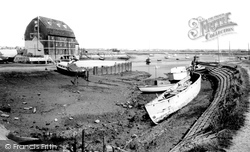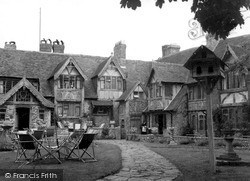Places
5 places found.
Those places high-lighted have photos. All locations may have maps, books and memories.
Photos
9,649 photos found. Showing results 1,321 to 1,340.
Maps
18 maps found.
Books
13 books found. Showing results 1,585 to 13.
Memories
4,612 memories found. Showing results 661 to 670.
Memories Of A Nurse
I came to work in Sulgrave in the 1980s. I worked for Major George Coombs who lives at Stonecourt on the Hedom Road. My first thoughts of the village were that it was very quiet and that the people were all ...Read more
A memory of Sulgrave in 1981 by
My Great Grandfather
This is a photo of Henry Kitchen, my mother's grandfather, who was also one of Stanhope Forbes' favourite models. He was painted sitting in the rowing boat in Forbes' painting 'The Lighthouse', which now hangs in Manchester Art ...Read more
A memory of Newlyn in 1900 by
Postcards Of Llwyngwril
I have now discovered the existence of 229 separate postcards for this delightful village and of these I have collected 171. They range in date from 1890 to 2008 and Friths were the most prolific of publishers, issuing ...Read more
A memory of Llwyngwril by
School Days
I moved to Ecclefechan in 1977, I attended the old school for 3 months. I was in p3 at the time. It was overwelming at the time as I had moved from a school with only 18 pupils in total. I remember having Mcferson at the time. I ...Read more
A memory of Ecclefechan in 1977 by
Hall Farm Eastham
I lived at Hall Farm during the war years and along with my sister attended the Village School where Bill Haining was headmaster. My father farmed 300 acres in and around Eastham and kept a dairy herd of about 50 cows. The farm ...Read more
A memory of Eastham in 1940
Cotgrave Memories
Our grandad George Boultby was a miner at Cotgrave. Because we didn't have a car, we had to go on the old type Barton buses. We would walk from the bus stop to our grandparents' house. They used to live in two different ...Read more
A memory of Cotgrave in 1970 by
Growing Up In The 1950s
Dad was the village policeman, PC 39. Our family name was Moss. We lived outside the village near the T junction to Little Waldingfield (two farm houses, we lived in one of them). Dad, mum and my 4 sisiters. We ...Read more
A memory of Great Waldingfield in 1951
2 Years In The Village
Sometime around 1956, for about two years, two of us shared a cottage in Iford village (one of the first two as you came off the main road from Lewes). We worked for Mr Robinson milking his Guernsey herd and doing ...Read more
A memory of Iford in 1956 by
Welbeck Colliery Village Now Know As Meden Vale
My Grandparents moved to Welbeck Colliery Village about 1926, when my mother was 10 years old, and stayed in the same house at the bottom of Elkesley Road until they went into care in the 1970s. ...Read more
A memory of Meden Vale by
Court Crescent Junior School And Wellinger Way
I was born at my Grandmother's home at No: 50 Hand Avenue on the Braunstone Estate. When I was about 3 we moved from Grandma's to our own home at No: 9 Wellinger Way. I went to Queensmead ...Read more
A memory of Braunstone Town by
Captions
5,016 captions found. Showing results 1,585 to 1,608.
This small pub on the outskirts of the isolated hamlet of Blackheath, with its shaded canopy and planted tubs, has undergone a name change, and now bears the uninspired title The Villagers.
Originally the site of the village pump, this cross is at the junction of five roads. The George Inn, behind the cross, and the King's Arms (left) are now just houses.
This fine Early English church, set back from the village and behind a narrow green, boasts a raised 13th-century chancel and a tapering, shingled broach spire.
In a field near Lilbourne's All Saints church are the remains of several burial mounds from the Roman encampment.
In the early 18th century the manor passed to Thomas Pitt, an enterprising businessman who made a lot of money by selling a valuable diamond to the Regent of France.
At the beginning of the last millennium, marauding Danes landed on these sandy beaches and put the village of Exmouth to fire and sword.
The Cross Keys (left) dates from the 17th century, though it replaced an earlier structure. Until the 19th century, there was a brewery here too.
St Joseph's Catholic church stands in Arrowe Park Road, just a short step from the main cross-roads in the village. It was designed by Adrian Scott and opened in 1954.
The Village Green c1955.
The houses of Bramber are varied and picturesque. Some are built of brick or flint, and some are creeper-clad. The village was once an important port on the River Adur.
Designed by Nash in 1809 and rebuilt to look exactly the same after a fire at the beginning of the 20th century, Knepp Castle stands between the villages of West Grinstead and Shipley.
The busy A21 road goes right through the village, and the demand for a bypass is still ongoing.
The village lay on the A4 Bath road, but it is now a by- passed backwater with the roar of the M4 within quarter of a mile. Traffic levels are almost back to those of the 1950s.
Downholme, where stone houses slope down to the Swale, lies 5 miles west of Richmond. In the village is a 13th-century Norman church.
This attractive village lies just off the main road, where children sit beside the bus stop. The Blue Bus Company operated services in the area from 1916 until 1946.
When Leland visited Weobley in 1540 he described it as 'a market-town where there is a goodly castle, but somewhat in decay'.
Two inns, the Britannia (left) and the Horse and Groom, still occupy the centre of this extended but fine country village that retains its atmosphere.
Apart from All Saints, little of architectural quality has survived, except for a few rather handsome houses, including the Rectory of 1808 and the Old Hall.
Noss Mayo's church, seen in the middle distance, was built on the orders of Lord Revelstoke in 1882 in a beautiful setting above both the village and river.
This narrow, winding street leads to the Cod and Lobster Inn and the sea.
This really was how the mail was delivered into Clovelly until relatively recently. Everything that was needed in the place was transported by donkeys, and often towed on sleds.
Fawley stands on the western bank of Southampton Water, just where it flows out into the Solent.
By the beginning of the 20th century, Lulworth was already a popular residential area for the better-off, who may have originally fallen in love with the village on a holiday visit.
The Village Pond c1955 A tranquil view of Rottingdean pond, replete with model sailing boats hardly stirring above their reflections on a warm summer's day.
Places (5)
Photos (9649)
Memories (4612)
Books (13)
Maps (18)


